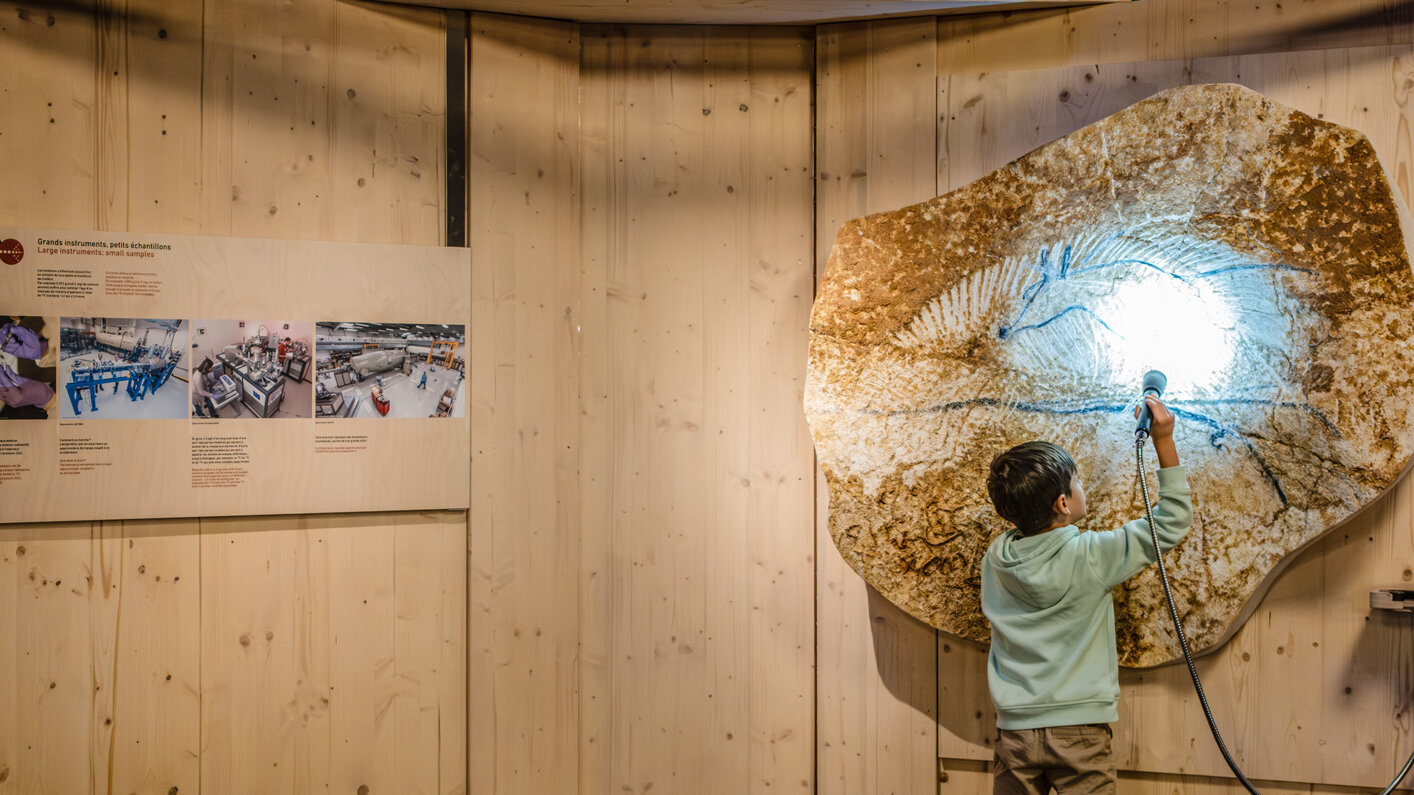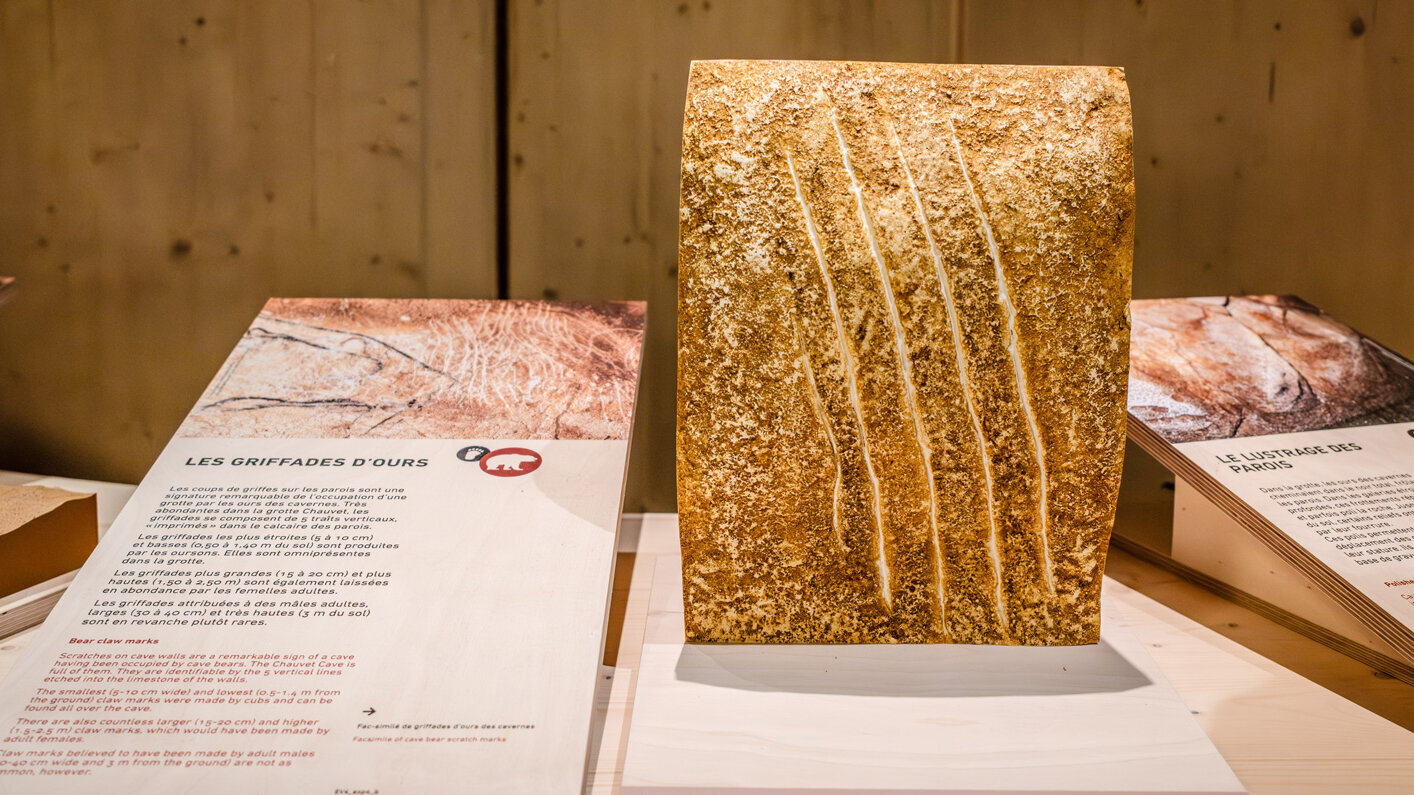The exhibition
Trailer of the exhibition The Chauvet Cave: a scientific adventure (0'30)
The exhibition shows the day-to-day work of researchers in the Chauvet Cave. Four weeks a year, the scientists can cautiously observe all the details of the inside of the cave, and then continue working on the outside. Get inside the life of these scientists: experience their work conditions, wear their equipment, discover their tools, get to know the technologies they use, analyse prints as well as fossilised excrement…
Wander freely among four spaces that help us understand the different faces of the cave: interdisciplinary research, living beings of the Palaeolithic that inhabited it, the art inside the cave… Get ready to live a real scientific experience!
Practical information
-
From age 9
-
Trilingual exhibition (French, English, Spanish)
Accessibility
- Accessible to visually impaired visitors
- Accessible to visitors with reduced mobility
- Accessible to deaf and hard of hearing visitors
- Accessible to cognitively impaired visitors
- Accessible to signing deaf visitors


![[Translate to Anglais:] [Translate to Anglais:]](/fileadmin/_processed_/c/c/csm_Bandeau_Chauvet_smartphone_642334ebf5.jpg)



